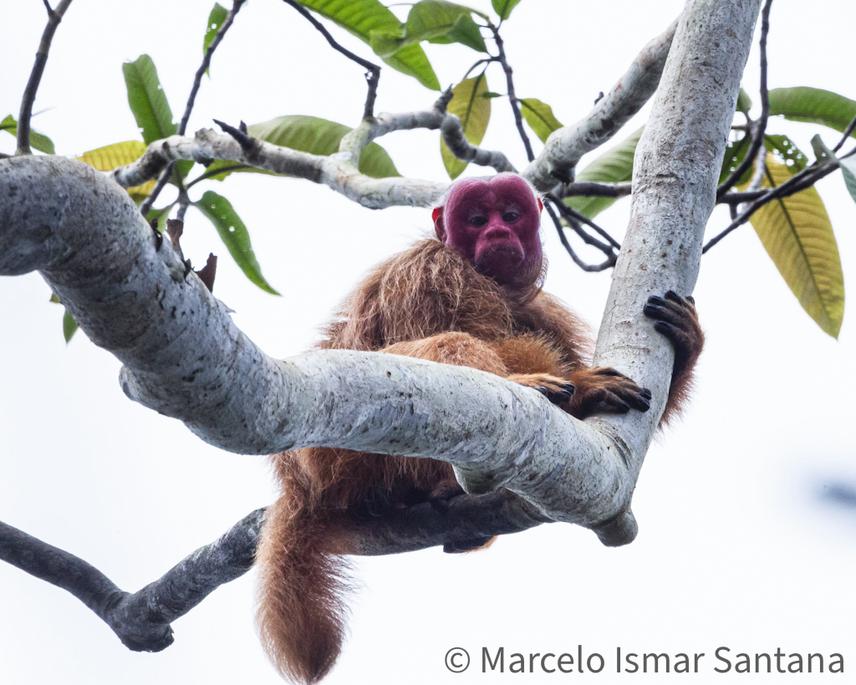Renann Henrique Paiva Dias da Silva
This research project will assess the digestive physiology, and the influence of temporal-spatial variability and physicochemical characteristics of food resources on the feeding ecology, behaviour and spatial use of the endemic Red-Headed Uakari monkey Cacajao calvus novaesi over one annual cycle, in floodplain (várzea) and unflooded (terra-firme) forests of the Middle-Juruá Extractive Reserve and the Uakari Sustainable Development Reserve, Amazonas state, Brazil. The taxon is endemic to Brazil and is restricted to the Juruá river basin.

Novaes' Red-headed Uakari monkey (Pitheciidae Cacajao novaesi) in the floodplains of Middle Juruá. © Marcelo Ismar Santa.
Currently, all available information regarding home-range size, habitat selection, geographic distribution, and natural history of C. c. novaesi remains scarce, and are inadequate to establish conservation criteria for this primate. I intend to generate sufficient data to establish such criteria, thereby ensuring better management strategies for in situ conservation at RESEX Médio-Juruá and neighbouring landscapes, where sustainable hunting and natural resources exploitation are permitted, if residents comply with reserve management guidelines.
The study proposed here will form the first detailed and technologically assisted analysis of the feeding behaviour, diet, activity patterns and ranging ecology of this primate endemic primate species, describing and discussing these patterns in relation to seasonal and spatial variation in resource availability. To monitor the primates and their environment, the study will use novel technologies, such as a GPS collar that will capture physiological data of three individuals.
Dietary and behavioural ecology are central components of species biology and provide essential information for effective conservation strategies. Cacajao calvus novaesi (Pitheciidae) is one of the rarest primates of Amazonian floodplain forests, and has a low population density, highly restricted geographic distribution, and are vulnerable to logging and hunting (IUCN). However, information essential for its conservation is still lacking. Consequently, the current study will provide the first detailed documentation of the diet, ecology and behaviour of Novaes’ Red-headed Uakaris, describing and discussing these patterns in relation to seasonal variation in resource availability. This will also address key information in conservation planning.
The relevance of the research therefore lies in the study of a vulnerable primate species, which, by virtue of its small and restricted range, and highly specialized diet, is more vulnerable to human impacts (IUCN 2021: Ravetta and Boubi), but which still currently lacks a detailed analysis of its biology, since it occupies a remote area of the western Amazon, where it inhabits seasonally flooded forests. Although described over 160 years ago, there are few observations of this primate in the wild.